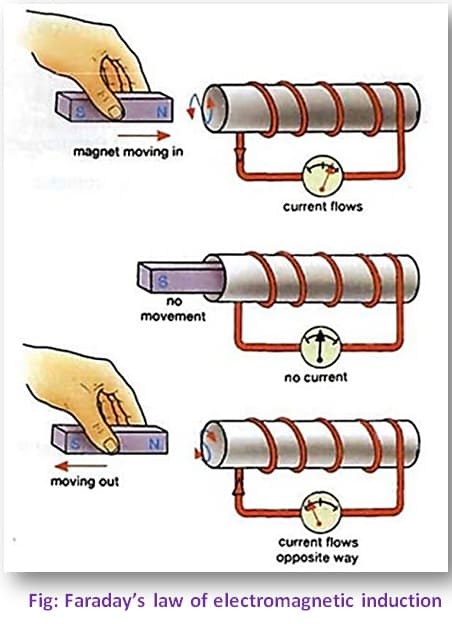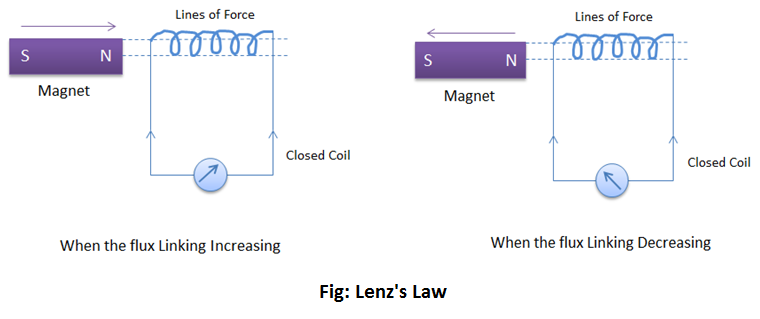Faraday’s law of electromagnetic induction:
1st Law: When there is a relative motion between a closed coil and a magnet, thereby changing the magnetic flux intercepted or cuts across by the closed coil, an emf is induced in the coil.
2nd Law: The magnitude of the induced emf depends upon the rate of change of flux linkage.

Let us take a closed coil having ‘N’ turns and flux through the coil changes from Φ1 to Φ2 in t seconds.
Now, the changes of flux = NΦ2 – NΦ1
Time is taken to change it = t sec.
Therefore, the rate of change of flux linking
= (NΦ2 – NΦ1)/t
Then from the second law, the induced emf is given by,
e ∝ (NΦ2 – NΦ1)/t
or, e = K.(NΦ2 – NΦ1)/t
This K is known as the constant of proportionally, whose value is one in the S.I unit
∴ e = N(Φ2 – NΦ1)/t volt
In the differential form of the equation, we can write
∴ e = N. dΦ/dt volt
Lenz’s law:
This law states that the direction of the electromagnetically induced emf and hence the induced current will be in such a direction that it will oppose the cause to which it is created. When a closed coil is placed in the field of a ‘North‘ pole of a magnet an emf will be induced in the coil. This is due to the relative motion between the coil and the magnet. The production of the induced emf causes an induced current in the coil.

As per Lenz’s law, the current induced in the coil will be such that it creates an opposition, the very cause for which it is created. Due to the movement of the magnet, this induced current in the coil is produced. Thus, the direction of the induced emf should be such that it will oppose the movement of motion of the magnet.